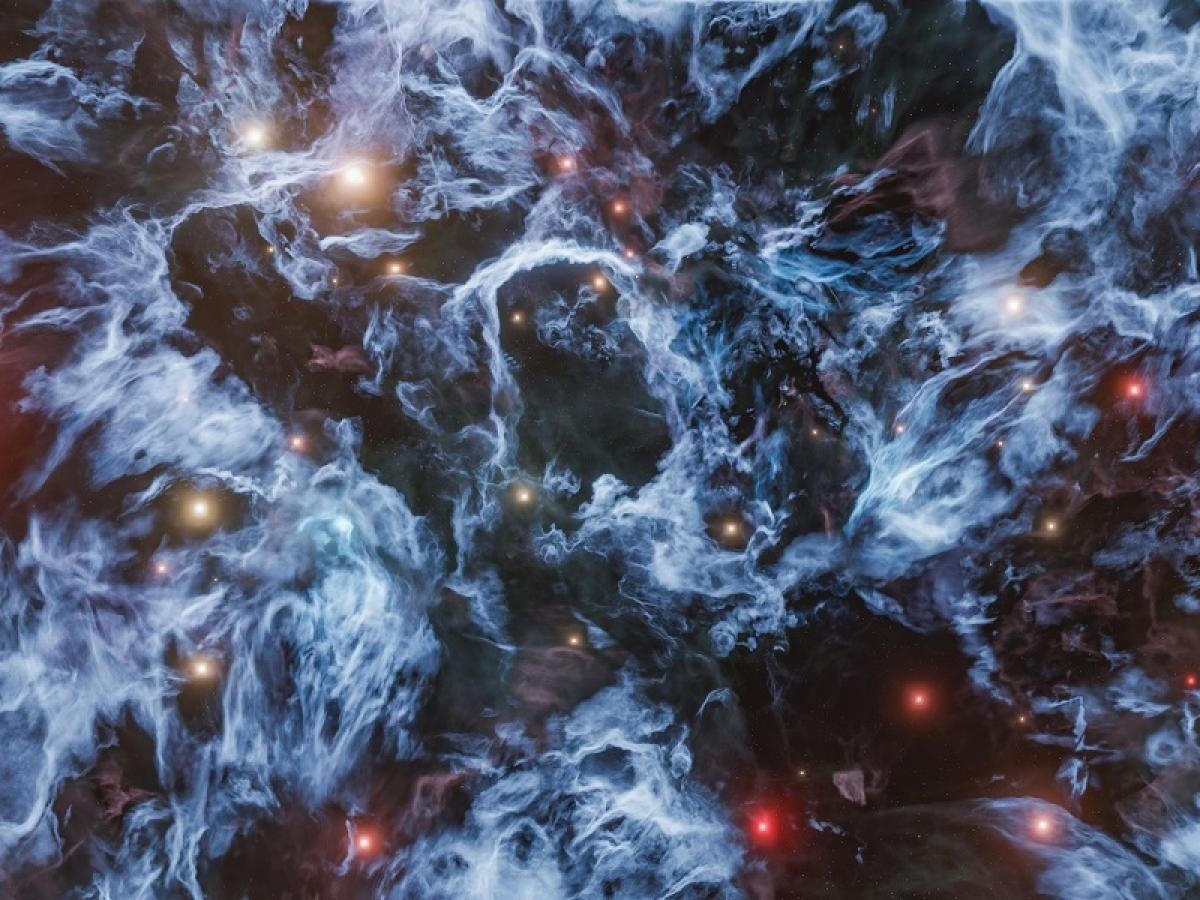An international research group headed by experts at the University of Adelaide has revealed additional clues in understanding the nature of dark matter.

The blue nebula with bright stars background. Image Credit: Wirestock
Dark matter makes up 84% of the matter in the universe but we know very little about it. The existence of dark matter has been firmly established from its gravitational interactions, yet its precise nature continues to elude us despite the best efforts of physicists around the world.
Anthony Thomas, Elder Professor of Physics, University of Adelaide
Thomas added, “The key to understanding this mystery could lie with the dark photon, a theoretical massive particle that may serve as a portal between the dark sector of particles and regular matter.”
The so-called regular matter, of which humans and the physical world are composed, is far less abundant compared to dark matter: five times more dark matter exists compared to regular matter. Gaining more information regarding dark matter is one of the greatest difficulties for physicists across the world.
The dark photon is known as a hypothetical hidden sector particle, suggested as a force carrier akin to the photon of electromagnetism but possibly linked to dark matter.
Testing present theories on dark matter is one of the methods that researchers like Professor Thomas, along with collaborators Professor Martin White, Dr. Xuangong Wang, and Nicholas Hunt-Smith, who are members of the Australian Research Council (ARC) Center of Excellence for Dark Matter Particle Physics, are pursuing to obtain more clues into this elusive but highly significant substance.
In our latest study, we examine the potential effects that a dark photon could have on the complete set of experimental results from the deep inelastic scattering process.
Anthony Thomas, Elder Professor of Physics, University of Adelaide
Analysis of the by-products of the collisions of particles expedited to extremely high energies provides researchers with good proof of the structure of the subatomic world and also the laws of nature governing it.
As far as particle physics is concerned, deep inelastic scattering is the name provided for a process that has been utilized to probe the insides of hadrons (especially the baryons, like protons and neutrons), using muons, electrons, and neutrinos.
We have made use of the state-of-the-art Jefferson Lab Angular Momentum (JAM) parton distribution function global analysis framework, modifying the underlying theory to allow for the possibility of a dark photon.
Anthony Thomas, Elder Professor of Physics, University of Adelaide
Thomas added, “Our work shows that the dark photon hypothesis is preferred over the standard model hypothesis at a significance of 6.5 sigma, which constitutes evidence for a particle discovery.”
Journal Reference
Hunt-Smith, N. T., et al. (2023) Global QCD analysis and dark photons. Journal of High Energy Physics. doi.org/10.1017/9781009401845.